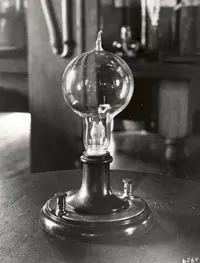Everyone who has read anything about money management has probably heard that you need to have an “emergency fund” to cover unexpected expenses. But we rarely hear about the need to plan for “expected expenses”. Everyone knows that things eventually wear out and will have to be replaced but often we fail to consider how we will pay for them when that happens. Well run businesses call this type of planning a “sinking-fund”. So if they know some piece of machinery has a 20 year life expectancy they they will set aside 1/20th of the cost every year so in year 20 they can buy a new one. You should do the same thing for certain items around your home. Here are a few things you need to create your own “sinking fund” for.
Plumbing
Plumbing systems are a big part of hassle-free modern existences. Effective plumbing systems give you the luxury of being able to relish warm showers in the A.M. They give you the ability to handle all sorts of personal care duties in general. Plumbing problems can emerge at any time. That’s why smart people often make a point to save for plumbing repair projects of all kinds. According to Bob Villa of This Old House, “a traditional tank-type water heater lasts an average of eight to 12 years and a tankless water heater can last up to 20 years, sometimes even longer.” So if you expect a new water heater to cost $400 and last 8 years that would mean setting aside about $50 per year to cover the cost of a new one. While $50 per year doesn’t sound like much having to come up with $400 on the spur of the moment may be difficult for some people.
Roof Repairs
A house isn’t really a house without a good quality roof. Roofing systems protect residences from rain, snow and wind, and attic insulation becomes virtually worthless if it gets wet, so your roof also helps keep your home a comfortable temperature. That’s why the last thing you want is for your residential roof to be anything less than stellar in strength and quality. It doesn’t matter if you have a roof leak or sunlight issues. Saving up for roof repair can make you feel a lot more confident. If you ask a roofing contractor they will tell you the average fiberglass shingle roof lasts from 20 to 30 years. Wood shingle roofs average about 25 to 30 years. Wood shakes are a bit thicker and last 35 to 40 years. Standing-seam metal roofs have a lifespan of 30 to 50 years and can be painted to help them last even longer. Clay tile and Slate roofs routinely last 100 years or more when properly maintained. So if you have a typical shingle roof you might want to consider putting aside 1/20th of the cost every year. But if you have a metal or slate roof, it may last longer than you will. These days roof replacement costs between $3.50 to $5.50 per square foot to have architectural shingles installed and an average roof is about 1,700 square feet so a replacement roof would cost $5,950 – $9,350 which is more than most homeowners have laying around.
Repainting
Impressions matter in this world. If you want your home to appear enticing and neat, then you need to put attention into its exterior paintwork. Exterior paint that’s chipping and discolored can ruin the look of your property. Painting regularly can also help your exterior siding last longer by preventing moisture infiltration, and insect infestation. That’s why saving for painting repair work can often be so important. Experts recommend repainting the exterior of your house every 5-8 years but a lot depends on the type of material your siding is made of and your weather conditions. As of this writing according to Home Advisor “Homeowners report that the average cost to paint a house nationally is $2,802 and most pay between $1,684 – $3,921”.
Heating and Air Conditioning
Heating, Ventilation and Air-Conditioning (HVAC) systems need regular maintenance in order to function properly. Furnaces on average last 15-20 years, heat pumps 16 years, and air conditioning units 10-15 years.. The average Heat Pump HVAC system costs between $3,000 and $8,000 to replace. Incidentally, I recently wrote an article about HVAC mechanics being a good field to go into even if you don’t have a college degree.
Electrical Setup

In 1882, Thomas Edison formed the Edison Electric Illuminating Company of New York, which brought electric light to parts of Manhattan. But progress was slow. Most Americans still lit their homes with gas light and candles for another fifty years. Only in 1925 did half of all homes in the U.S. have electric power. In those days you would be lucky to have a house with a single bulb hanging in the center of each room requiring a 15 or 20 amp service for the entire house. Today’s homes use electricity for lights, heat, electronics, A/C, and a variety of other things with modern homes having 200 amp services at a minimum. If your electrical system isn’t working properly you can get a shock, your lights or outlets may not work properly, or it could even cause a fire. However, there is no “life expectancy” for an electrical system so there is no way to estimate how long it will last. So if something goes wrong this expense should come out of your regular emergency fund.
Don’t ever assume that the need for home repair work is distant. Issues with the operations of your home can occur literally at any time. If you want to protect yourself from shocks and financial setbacks, you should think about saving cash for all kinds of possible repair tasks.
You might also like:
- Finding the Right Material for Your Roof
- 6 Tips for Financing as a First-Time Homeowner
- Money-Saving Upgrades: 3 Home Investments to Help Your Wallet
- Avoiding Costly Disasters: 4 Common Home Repair Jobs for Fall and Winter
- 4 Tips For Building Financially Stability
- Rainy Day Fund – Securing for Your Family’s Financial Future


